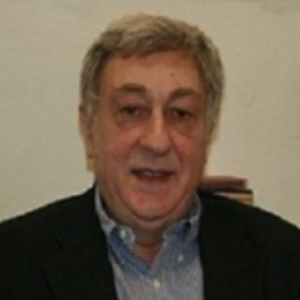Title : Structurally dimensional effects in selective heterogeneous catalysis of renewable biomass into important products of petrochemistry
Abstract:
In recent years, much attention has been paid to the use of renewable biomass as an alternative raw material for the production of fuel components, hydrogen and syngas, as well as important monomers. In this direction, a special role is given to catalytic processes using nanoscale catalytic systems that provide highly selective conversion of renewables.
The report presents the results obtained during recent years in the laboratory of Catalytic nanotechnology of A.V. Topchiev Institute of Petrochemical Synthesis RAS concerning with the study of the structural organization of nanoscale metal-containing active components effect on selective conversion of ethanol and fermentation products, fatty acid triglycerides and plasma-catalytic dry reforming of mixed kraft lignin in the main energy carriers and important petrochemical products.
It was found that by increasing the ratio of the active components of Sn/Pt to 5 in Pt-Sn/Al2O3 catalysts, the selectivity in the reaction of reducing deoxygenation of a large number of esters, including fatty acid triglycerides, increases in the hydrocarbon components by the number of carbon atoms corresponding to the ether fragments and water:
The yield of light hydrocarbons C1, C2 and carbon oxides CO2, CO does not exceed 0.5%. The study of the evolution of the active components structure showed that high selectivity is provided by the formation on the surface of the nanoscale intermetallic particles PtSn3±δ and tin oxides with a size of 2-3 nm.
Using a porous hybrid membrane-catalytic ?onverter obtained by self-propagating high-temperature synthesis of Ni(5% Al)-Co composition, a high conversion is achieved in the process of dry and steam reforming of methane, hydrocarbons, ethanol and fermentation products into synthesis gas, reaching 80-120m3 /dm3membr.h. The role of Al on the formation of reforming active components on the inner surface of the converter channels was established. The study evolution structure with use X-Ray and TEMHR showed that in the presence of 5-8% Al, the formation of the converter proceeds by the so-called mechanism of aluminothermal synthesis, as a result of which aluminum atoms reduce cobalt from its oxide, turning into aluminum oxide particles up to 200 nm in size, on the surface of which highly dispersed intermetallic particles of Ni-Co alloy with a size of 5-8 nm are formed:
8Al + 3Co3O4 ® 4Al2O3 + 9Co
Co + Ni → [NiCo]/ Al2O3
The methods of nickel-and iron-containing components formation on the surface of mixed lignin of wood origin, having the ability to possessed by high possibility to absorb of microwave irradiation (MWI) with plasma generation. Dry reforming of organic mass of lignin (OML) proceeds in the mode of plasma stimulated by MWI at the average temperature of the reaction zone 700-800C. Conversion to OML reaches 65% at selectivity in producing syngas of H2/CO – 1 up to 92%. Time of carrying out of process is 15 min. With using vibration and messbauer spectroscopy, TEMHR and magnetic measurements have studied evolution of the structural organization of the active components having high ability to absorption of MWI and catalytic activity in dry reforming process.
High activity (60%) and selectivity (85-90%) in reactions of selfcondensation of supercritical ethanol to n-butanol and ?-alkylation of isopropanol-2 by ethanol to pentanol-2 were reached in the presence of nanosize
bimetallic catalysts such as Au-Ni; Au-Cu and Au-Fe forming on the surface of γ-Al2O3 as nano size particles 2-3 nm
It was shown that the role of gold co- reagents is providing by high activity and selectivity of the catalysis consist of in an obstacle of agglomeration of the gold nanoparticles and formation of Au+.



